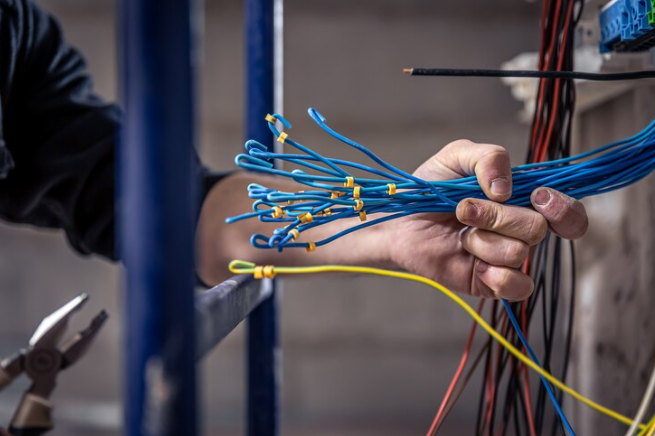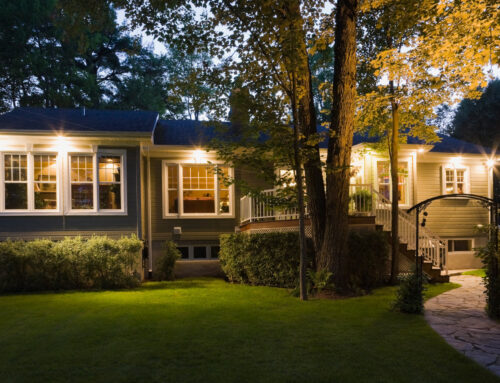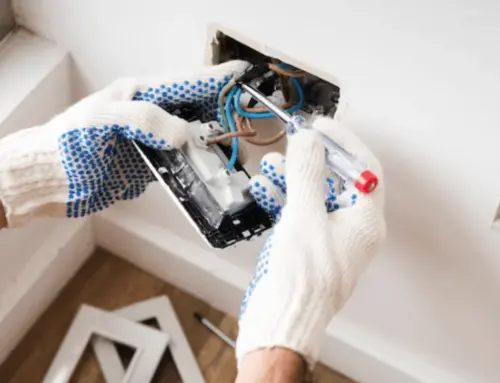 When it comes to electrical wiring, the traditional method of using high-voltage systems has been the norm for many years. But as technology advances and the demand for energy efficiency grows, more and more people are turning to low-voltage solutions for their homes and businesses. And why not? These solutions are gaining popularity for good reason!
When it comes to electrical wiring, the traditional method of using high-voltage systems has been the norm for many years. But as technology advances and the demand for energy efficiency grows, more and more people are turning to low-voltage solutions for their homes and businesses. And why not? These solutions are gaining popularity for good reason!
But what exactly is low-voltage wiring? How does it differ from traditional high-voltage systems? And what are the benefits of implementing low-voltage solutions in homes and businesses?
Let’s explore the world of low-voltage wiring and its applications in this blog!
Understanding Low Voltage Wiring: What Is Low Voltage Wiring in a House?
Low voltage wiring refers to any electrical system that operates at or below 50 volts (V). This is significantly lower than traditional high-voltage systems that operate at 120 V or higher. Low voltage wiring typically uses transformers to reduce the electrical power from the main source, making it safer and more energy-efficient.
But why choose low voltage over high voltage? One of the main reasons is safety. With lower voltages, there is a reduced risk of electric shock or fire hazards. Moreover, opting for low-voltage systems can bring significant cost savings both during installation and maintenance, making them a budget-friendly choice in the long term.
What Are The Different Low Voltage Applications Found In Residential And Commercial Buildings?
Residential Buildings
In residential buildings, low-voltage wiring can be found in a variety of applications. The most common being lighting systems, security systems, and communication systems such as telephones and internet connections.
Low-voltage wiring lighting systems are gaining popularity because they are energy-efficient and highly versatile. With the use of dimmers and smart controls, homeowners can easily adjust the brightness and mood of a room with the touch of a button. Security systems also benefit from low-voltage wiring as it allows for easier installation and integration with other home automation systems.
Furthermore, many homes now rely on low-voltage communication systems such as internet connections, telephones, intercoms, and audiovisual equipment. These systems require lower power consumption but still provide high-quality performance.
Commercial Buildings
Similar to residential buildings, low-voltage solutions have numerous applications in commercial buildings as well. In addition to lighting, security, and communication systems, low voltage is also used for HVAC (heating, ventilation, and air conditioning) systems. By using low-voltage wiring, building owners can save on energy costs while still maintaining a comfortable environment for occupants.
Another common application of low voltage in commercial buildings is fire alarm systems. With lower voltages, these systems are less likely to cause damage to the building’s electrical components in case of an emergency. Additionally, low-voltage wiring allows for easier installation and integration with other building management systems.
Best Practices for Low Voltage Wiring
While low-voltage wiring offers numerous benefits, it is essential to follow best practices to ensure safe and efficient installation. Here are some key considerations to keep in mind:
- Plan and design the system carefully: Proper planning and design play a crucial role in the success of any low-voltage wiring project. This includes determining the specific requirements for each component, understanding the building’s layout, and considering future expansion or upgrades.
- Use high-quality components: When it comes to low voltage systems, investing in high-quality components is key. Not only do they provide better performance and reliability, but they also last longer, resulting in cost savings in the long run.
- Follow safety standards: Low-voltage systems may have lower risks compared to high-voltage systems , but safety should still be a top priority. Make sure to follow all relevant safety standards and regulations to prevent accidents and ensure proper functioning of the system.
- Label wires and cables: With numerous wires and cables involved in a low-voltage wiring project, it is important to label them correctly. This will help with troubleshooting and maintenance in the future, saving time and avoiding confusion.
- Properly secure all components: Low-voltage systems are often installed in areas that may experience vibrations or movements, such as ceilings or walls. It is crucial to properly secure all components to prevent damage or disconnection from these movements.
- Use appropriate tools for installation: To ensure safe and efficient installation, always use the right tools for the job. This includes wire strippers, crimpers, and testers for cables and wires.
- Test the system thoroughly: Before finalizing the installation, it is important to test the entire low-voltage system thoroughly. This includes testing all components, connections, and functionality to ensure everything is working as intended.
- Keep documentation and records: Keeping thorough documentation and records of the low-voltage wiring project can save a lot of time and effort in case of future repairs or upgrades. It also helps with troubleshooting and identifying any potential issues.
- Regular maintenance: Like any other system, low-voltage systems require regular maintenance to ensure proper functioning. This includes checking for loose connections, damaged components, or outdated equipment.
- Consider hiring a professional: While DIY projects can be fun and cost-effective, it is always a good idea to consider hiring a professional for low-voltage wiring projects. They have the expertise and experience to handle complex installations and can ensure the job is done correctly.
To ensure the safety and efficiency of low-voltage wiring systems, it is essential to follow best practices during installation and maintenance.
Solving Low-Voltage Electricity Problems
Despite following best practices, low-voltage electricity problems may still occur. Here are some common issues and potential solutions:
- Low voltage supply: If you notice that devices like lights or appliances are not receiving enough power, it could be due to a low voltage supply from the main electrical panel. This can be resolved by upgrading the panel or adding a booster to increase the voltage.
- Voltage drop: Voltage drop occurs when there is a significant distance between the source of electricity and the device being powered. It can result in dimming lights or inefficient operation of appliances. To solve this issue, consider using thicker wires or installing a transformer closer to the device.
- Short circuits: Short circuits occur when two bare wires come into contact, causing a surge of electricity that can damage the wiring and connected devices. To solve this issue, it is important to regularly check for loose connections and damaged wires.
- Overloading: Overloading happens when too many devices are connected to a single circuit, resulting in insufficient power supply. This can be solved by redistributing the devices across multiple circuits or adding additional circuits.
Low voltage wiring has become an increasingly popular choice for homes and businesses due to its safety, efficiency, and cost-effectiveness. With a variety of applications and best practices in place, low-voltage solutions offer a reliable alternative to traditional high-voltage systems.
However, it is important to stay informed about potential issues and regularly maintain the system to ensure optimal performance. By following the guidelines discussed in this post, you can make the most out of your low voltage wiring installation and enjoy a safe and reliable electrical supply for years to come.
If you are considering low voltage wiring for your home or business, consult with a licensed electrician who specializes in these types of installations. They can provide expert advice on the best solutions for your specific needs and ensure that your system is set up correctly and safely.
Don’t compromise on the safety and efficiency of your electrical supply – explore low voltage options today! So why wait? Contact our experienced electricians now at Starnes Electric and take the first step towards a more modern, efficient, and cost-effective electrical system.





